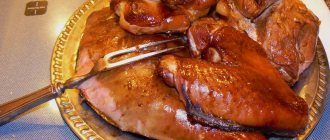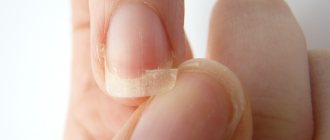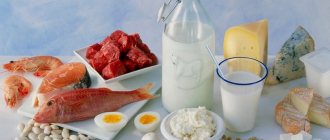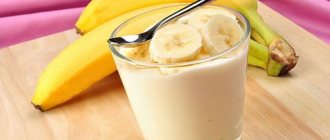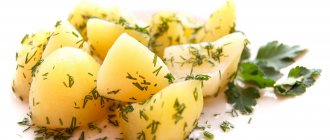The fact that the rule of energy balance (which we once again recalled in the feuilleton “Enzymes in sausages and buckwheat porridge in the mind”) works is beyond doubt for any even slightly educated lover of a healthy lifestyle.
Let's remember this rule: the change in your weight is simply the difference between the calories you eat and the calories you burn.
If you ate more than you spent, you gained weight; you ate the same amount, but spent more, and the weight went off.
So it is believed that 3500 kcal = approximately 0.5 kg of weight . That is, if you ate for a week with a daily deficit of 500 kcal, then by the end of the week you should lose about 0.5 kg of weight. (Why not the rule 7000 kcal = 1 kg? Because in the USA, where it came from, it is customary to count in pounds, and 1 pound is about half a kilo).
Russified “rule 3500 kcal = 1 pound” - “rule 7-8 thousand kcal = 1 kg” from the cartoon Zozhnik.
LiveJournal user shantramora translated a text by the famous scientist Lyle MacDonald about why the 3500 kcal rule is rarely accurate in practice.
Why the “3500 kcal rule” is not accurate in practice
I'm pretty sure everyone knows the old rule: 3500 kcal is half a kilo of weight. This idea of energy balance leads to overly straightforward, “mathematical” calculations of weight loss. It is estimated that simply reducing energy intake by 500 kcal per day - or increasing energy consumption by 500 kcal - should lead to weight loss of half a kilo per week.
But this approach works for almost no one. Or almost never. There are several reasons for this, not the least of which is poor dieting, which leads to less (than expected) weight loss [13]. But even if a person who wants to lose weight strictly adheres to the diet, real changes will differ from the calculated figures.
And for this reason, many people mistakenly believe that the concept of energy balance itself is incorrect, or does not apply to people, etc. But the only mistake is the interpretation of the rule itself , the way it is presented, and why it almost never works as expected. Because, in general, creating a deficit (or excess) of 3500 kcal does not lead to a loss (gain) of 0.5 kg of weight per week [14].
There are several reasons for this misunderstanding.
First, the energy balance equation says nothing about changes in weight; it says that the long-term difference between intake and expenditure determines how much energy is stored or removed from the body. And the first problem we face is that different types of tissue (e.g. organs, brain, muscle, fat, carbohydrates, water) contain different amounts of energy:
In essence, the 3,500 kcal rule only applies to burning fat, not other components of the body. And, by the way, fat is not 100% triglycerides, but only 85-90%. Let's take 87% for good measure. The rest is water and other cellular components.
So in one pound of fat (454 grams) there would be approximately 394 grams of triglycerides, which provide 9 kcal per gram, so the total would be 3,555 kcal. This is where the 3500 kcal rule comes from. But again, I want to remind you that this is not just about fat.
When to eat on a fasting day?
Is there an optimal plan? Michael, one of the authors of this book, tried several different diet regimens. The most acceptable option for him turned out to be to arrange two non-consecutive fasting days a week, allowing himself 600 kcal, divided into two meals - breakfast and dinner. On a fasting day, he would usually have breakfast with his family around 7:30 a.m. and then try to have dinner with them at 7:30 p.m., without snacking in between. Thus, in one day he had two twelve-hour periods without food, and the family was happy.
Mimi, Michael's co-author, found that a slightly different schedule suited her better. Following the basic idea of the Fast Diet, she ate 500 kcal, divided into two main meals and several small snacks (apple, carrot sticks) in between, because such a long break between breakfast and dinner was too uncomfortable for her.
Which method is better? Purely theoretically, a longer break between meals (Michael's option) should give better results than one in which you eat a little, but often. However, there has not yet been a study comparing which option is healthier.
Dr. Mark Mattson of the National Institute on Aging agrees that consuming 500 or 600 calories per meal is likely better than consuming several small meals throughout the day. He believes that the longer the period without food, the stronger the adaptive cellular response to stress, which is beneficial for the brain.
Some people don't feel hungry in the morning, so they would prefer to eat later in the day. This is fine. One of the leading researchers in the field starts her day with brunch at 11 a.m. and ends with dinner at 7 p.m. Thus, she limits herself to food for sixteen hours a day, twice a week.
Some people, on the other hand, prefer the simple option of eating only one meal, because in this case they can ignore food for almost the entire day.
The difference in the 3500 kcal rule: depending on what you lose/gain: water, muscle or fat
As a rule, when you are in a calorie deficit, it is not just fat that is lost. For example, water, although it does not contain calories, its fluctuations can significantly affect weight as such.
Incorrect application of the 3500 kcal rule will lead to the assumption that to gain 2 kg of weight you need an excess of 14,000 kcal. The same applies to losing 2 kilograms of water - it is clear that you cannot create a deficit of 14,000 kcal in a day . But it doesn’t have to be such a big deficit, because part of the weight lost will be water, which has no calories.
It's this misunderstanding that has given rise to the myth that low-carb diets provide some particularly cool metabolic advantage.
How does low carb work?
Typically, a sharp decrease in the amount of water in the body in the first few days of a low-carb diet (from 1 to 6 kg) is mistaken for a huge energy expenditure. But given that water contains no calories, the impression is wrong. If you return the same 1-6 kg of “water” weight to its place, the effect will be the same, that is, zero. Water contains no energy.
The fact that carbohydrate reserves in the body are often used up and replenished quite quickly also seems to break the rule.
But, firstly, 0.5 kg of carbohydrates does not contain 3500 kcal. There are about 2000 of them there.
Secondly, carbohydrates bind water, approximately 3-4 grams of water per gram. So, when replenishing the supply of carbohydrates by about 500 grams, in terms of energy we will get 2000 kcal, and in terms of weight – 500 g of “coals” + 1500 g of water. Approximately +2 kg. At the same time, the 3500 kcal rule is still not violated.
And this is an important detail, since at the initial stage of the diet, the consumption and replenishment of glycogen and water reserves can be quite noticeable . Let's say, in the first few days of the diet, a person may notice a significant weight loss of 2-3 kg. But this weight contains very few calories (no water at all, and a few carbohydrates), and in fact this sharp weight loss does not mean anything.
What to eat on fasting days?
There are two main principles that determine what you can eat on your fasting day and what foods you should avoid.
Your goal is to eat food that will make you feel satisfied while staying within your 500/600 calorie limit. The best choice in this case would be foods rich in protein , as well as foods with a low glycemic index . There have been several studies showing that those who eat a high protein diet feel fuller longer.
But the problem with a real protein diet is that people quickly get bored and give up. Therefore, the Fast Diet does not recommend completely boycotting carbohydrates and constantly adhering to a protein diet. However, on a fasting day, a combination of protein and foods with a low glycemic index will become a powerful weapon against hunger for you.
What body composition, not what weight
We are interested in body composition, changes in the tissues themselves, % fat and skeletal muscle / dry mass. And not only do they contain different amounts of calories, they are also consumed (burned) in different proportions, depending on gender, diet, initial percentage of fat, etc. Body protein also contains water (just like fat), so when it is broken down, water also leaves, and your weight may change a little more than calculated.
A woman's body is more likely to use fat for fuel (and burn less lean mass) than a man's, so a diet with enough protein and regular strength training will help maintain muscle mass (which means you'll burn more fat) . A person with a higher body fat percentage also loses less lean mass (and more fat).
In this latter situation, a very overweight person, if we ignore (ignore) water and glycogen, may well come quite close to the calculation model based on the “3500 kcal rule” ; it can also quite accurately describe the process at a later stage, when more fat has been burned. But in general, it’s always worth remembering that losing weight by those notorious half-kilograms takes longer than you might expect by roughly applying the “3500 kcal rule.”
Lyle MacDonald is a sports physiologist, nutritionist and author of many books on recomposition, fat loss and muscle growth.
Sample menu for the week
With a diet of 500 calories per day, the weekly menu includes three meals, but you can change it according to your understanding and well-being. Also, the weight of each serving is not indicated here. This was done specifically so that everyone can adjust the diet to suit themselves, that is, by increasing one of the meals, but reducing the weight in the other. Or focus more on proteins, reducing carbohydrates. This way, losing weight will be easier to bear and your health will remain comfortable.
Monday
Breakfast. Oatmeal with tomato and cucumber, chamomile tea.
Dinner. Cream soup of zucchini, carrots and peas, bread, rosehip infusion.
Dinner. Salad of cabbage, beets, carrots with boiled chicken breast.
Tuesday
Breakfast. Low-fat cottage cheese with berries, mint and lemon balm tea.
Dinner. Vegetable soup (pepper, zucchini, tomato, green peas, carrots), apple compote.
Dinner. Tilapia with vegetables (carrots, onions, tomatoes).
Wednesday
Breakfast. Rice porridge on water with grated carrots, green tea.
Dinner. Vegetable stew, cranberry juice (no sugar).
Dinner. Stewed rabbit with vegetable salad (tomato, cucumber, pepper, seasoned with vegetable oil).
Thursday
Breakfast. Natural yogurt with vegetables, bread, chamomile tea.
Dinner. Buckwheat porridge with mushrooms, carrots and onions, orange compote.
Dinner. Turkey with vegetables, baked on the grill.
Friday
Breakfast. Spelled porridge with carrots, rosehip infusion.
Dinner. Vegetable ratatouille, lingonberry juice.
Dinner. Pike cutlets with boiled rice.
Saturday
Breakfast. Cottage cheese casserole, green tea.
Dinner. Lenten borscht, bread, berry compote.
Dinner. Stewed chicken breast with vegetables.
Sunday
Breakfast. Bread with curd cheese and vegetables (cucumber, pepper), mint tea.
Dinner. Risotto with vegetables, cranberry juice.
Dinner. Pike perch with steamed vegetables.
Why does weight come off faster on Dukan? Because more muscle is lost
Let's look at this example. Let's say a person who is in an energy imbalance - in a deficit - spends 10% of energy from dry mass and the remaining 90% from fat reserves. It creates a deficit of 3500 kcal per week.
10% of the weight (350 kcal) comes from lean mass/muscle protein, which is only 600 kcal per pound. That's less than 230 grams of weight lost. The remaining 3,150 calories will come from fat (about 0.9 pounds of fat). So, in general, in a week you will lose 634 g of weight (230 g of dry mass and 404 g of fat).
This means that weight will be lost faster if more lean mass is burned , and I suspect that all sorts of centers and commercial weight loss programs recommend refraining from strength training for this very reason (this is the key to the ban on strength training on the Dukan diet!)
Exercising forces the body to conserve muscle while dieting (which is good), but weight loss is faster if more lean mass is lost. Imagine an absurd situation when all the weight is lost from the muscles, energy is consumed 100% from dry mass. Considering its low calorie content - about 700 kcal per pound, with the same deficit of 3500 kcal per week, you can lose as much as 2.5 kg of weight (due to muscles). But the composition (body composition) in terms of % fat will only worsen. Keep in mind, this isn't actually possible, I'm just taking such an extreme example to explain.
Please note: the owner of the butt on the left is simply starving to lose weight, losing muscle, and the proud owner of the butt on the right is doing squats... She also does massage, photoshop, and possibly silicone.
But in order to burn half a kilo of fat in this situation, you will need to make a deficit of 10% greater than 3500 kcal, since 10% of the energy is consumed in the breakdown of protein. So, to lose half a kilo of fat, you need a deficit of 3850 kcal, considering that 90% of energy comes from fat.
In fact, the 3500 kcal rule “doesn’t work” only because of a misunderstanding of the rule itself. It applies to fat burning if 100% of fat is burned. In the early stages of a diet, when water and glycogen are lost, more weight may be lost. And then, if the energy is not taken 100% from fat, then the rates will, at a minimum, differ from the calculated ones [15].
Converting calories to kilograms
If we count how many grams of pure fat are contained in calories, then 1 g of pure fat contains 9 kcal. I wonder why the numbers are different? Subcutaneous fat contains not only pure fat, but also water, connective tissue and other compounds. Thus, 1 g of subcutaneous fat contains 7.7 kcal. Fortunately, this is less than in pure fat.
Helpful information! You can safely lose 1 kg in a week. To do this, you need to know how many kcal are in a kilogram.
To lose exactly 1 kg per week, you need to make a daily deficit of 1000 kcal. Then the body will lose weight without any harm to health.
Note! To lose or gain weight, the main thing you should know about food is how many kilocalories there are in a kilogram of certain foods.
To gain muscle and fat, you need more calories than you get from burning them.
In addition, there is another aspect that, as usual, complicates everything. It takes a little more calories [than the tissue itself] to gain weight. So, if, when broken down, half a kilo of muscle gives only 700 kcal, then to build half a kilo of muscle, you need 2000 kcal or even more (the exact number is extremely difficult to calculate).
So, even with an excess of 3500 kcal, and even if you gain muscle alone, you will not get 2.5 kg of muscle, but something closer to 800 grams, since it takes 2000 kcal to build 450 grams of muscle. And, most likely, the amount of muscle gained will be even less, since part of the stored energy comes from carbohydrate stores, in addition, part of the weight gained may be fat, etc.
To store fat from food, not much more than 3500 kcal is required, although even fat is not stored with 100% efficiency.
So gaining fat will also require a little more calories, in addition, part of the weight gained will inevitably come from lean mass, and the amount of fat stored will still differ from the excess calories taken in.
But there is another extremely important factor that most people ignore or misunderstand. And perhaps it is even more important than the interpretation curve of individual aspects of the energy balance.
General Diet Recommendations
A diet of 500 calories or less per day cannot be followed on a permanent basis. Experts do not recommend such low nutritional value due to the fact that it will not be enough for vital processes. However, judging by the reviews and results obtained with the 500-calorie diet, short-term adherence helps to get rid of some extra pounds.
There are people who actually eat this way every day on a regular basis. It is worth noting that it is not good - the body is under constant stress, hormonal and other disruptions occur in the functioning of systems and mechanisms.
There are a few rules to remember when switching to a 500 calorie diet:
- The duration should not exceed 10-14 days.
- Food should be varied.
- The number of meals is at least 2-3 times a day.
- You need to chew slowly and thoroughly, since the signal to the brain that the stomach is full only arrives after 20 minutes.
- Drinking is not limited.
- Physical activity should be minimal, at least in the first days.
- The 500 calorie diet provides a varied diet, which should not become a mono-diet.
What are calories
Calories are the amount of energy the body gets from food. It is necessary to maintain a balance between calorie intake and expenditure. After all, if you consume less of them than you spend, then the body will definitely lose weight. Of course, it is advisable to do this together with sports, in order to achieve not only a reduction in the number on the scale, but also an increase in body tone.
Calories are the amount of energy the body gets from food
The calorie content of food is measured in different ways, one of which is a device called a calometer. This is a special thermally insulated chamber into which the product is placed and burned. Using this method, scientists find out how much heat is released and convert calories into kilograms. A similar situation occurs in the body: the body uses the energy received to produce heat, metabolism and physical activity.
500 calorie diet for weight loss: harmful to health
Lack of nutrition
Following a 500 calorie diet for a long time leads to nutritional deficiencies. A study published in Nutrition Journal found that a very low-calorie diet formula can lead to micronutrient deficiencies.
Significant decreases in serum concentrations of vitamin D, vitamin C, and zinc were observed in obese individuals on a low-calorie diet for more than 12 weeks.
500 calorie diet for weight loss: menu
The 5:2 diet plan requires you to be on a low-carb diet for two days. But what exactly should you eat?
Breakfast
| BREAKFAST OPTIONS | SUM | ||
| Decaffeinated tea or skim milk or black coffee without sugar | 8 ounces | ||
| Small banana + ricotta cheese | 1 banana + 1 medium bowl | ||
| Hard-boiled egg + wheat bread toast | 1 each | ||
| Decaffeinated tea or skim milk or black coffee without sugar | 1 cup + 4 tablespoons + 1 date |
Features of fat cell breakdown
The fat itself is located in adipocytes or fat cells. To extract it from there, it must be transformed into fatty acids and glycerol. To begin the breakdown process, you need to reduce the level of fatty acids in the blood (through diet) or increase the concentration of ATP breakdown products (through sports), which supply energy reserves and require fatty acids for their formation. We are not talking about glycerol now. Once in the blood, fatty acids move along with proteins and albumins. Their quantity determines blood viscosity and albumin content. This is another factor to consider when losing weight quickly.
Fatty acids are partially consumed for ATP energy resources with the participation of muscle contractions. Muscle activity promotes the utilization of fatty acids. At the end of the acid breakdown process, carbon dioxide and water are formed. After decomposition, water exceeds fatty acids by mass by 7.5 times. Thus, if you lose no more than 500 grams of fat per week, then it is safe. If, say, 1.5 kg of it per week is lost, then the volume of blood per day should increase by 1.5 liters. In total, a person has about five liters of shelter, so the increase will be 30%. And the additional liquid formed when burning fat passes through all vessels, loading the heart, kidneys, and internal organs. If fats are burned very quickly, this leads to severe wear and tear on the heart and kidneys. And this is another factor against rapid weight loss.
If weight loss occurs only through dieting, without sports, then this is also not the best scenario. Accelerating the weight loss process leads to an increase in the concentration of fatty acids in the body, increasing the risk of cholesterol deposits in blood vessels. If the muscles do not burn fat, it penetrates the liver and puts too much strain on it. Over the course of several strict diets, the liver can become heavily filled with fat cells and become a fatty organ, which provokes cirrhosis of the liver. Physical activity will help prevent fats from entering the liver. The diet should have enough protein, which takes part in the formation of muscles, which take an active part in the utilization of fat. It is also important that the body receives enough vitamins. It is useful to consume fish oil and flaxseed oil, which help normalize metabolism.
Now you know how many calories are in one kg of human fat, and how the process of burning this substance occurs. Remember that fat loss should be safe and moderate. It is important to listen to your body and not overdo it.
How to increase your calorie expenditure
To increase your calorie expenditure, you need to understand where you spend the most energy. Oddly enough, we spend a huge amount of it doing ordinary everyday things. Washing, cleaning and cooking quietly but surely burn our “fuel”, and when we are in a calorie deficit, we use up fat reserves.
If you add some activity to your daily homework, for example, active walks with your child, going to a distant store instead of the nearest one, then your calorie consumption will increase by almost a third!
Without an active lifestyle, weight will come off more slowly, and your body structure will noticeably suffer. It is important to include in your daily routine any activity for which you have time.
It could be:
- Morning work-out.
- Exercises at home.
- Walking to work instead of taking public transport.
- Evening promenade in the park.
- Biking, roller skating, skating or other enjoyable activities.
- If you don't have the opportunity to exercise, start renovating!
And of course, the most effective way to burn calories is to visit the gym. With or without a trainer, you will have a variety of exercise equipment and tools at your disposal. Find a workout that you enjoy and have fun with it. It will not be superfluous to communicate with like-minded people.
How to count calories
You can use websites and apps with ready-made recipes. You just need to follow the exact proportions and quantities of ingredients.
Edalite.ru
On this site you will find detailed recipes with photographs. At the end of each, the calorie content and content of proteins, fats, carbohydrates and dietary fiber are indicated.
Edalite.ru →.
YumNymra
There are quite a lot of recipes on the site. There are filters “Low-calorie”, “Fast”, “Simple”. Calories and nutrient composition are listed in the table. If you change the amount of ingredients, you can click on the “Calculate calories” button and find out how many calories there will be in the dish.
“YumNyamra” →
My healthy diet
On this site, all products and recipes are discussed in detail. Below the recipes the calorie content, amount of proteins, fats and carbohydrates are indicated. Below the products there is a description of the vitamins and microelements they contain.
“My healthy diet” →
Calorie counter from FatSecret
In this application you can keep a food diary. Add the foods you have eaten, and the utility will calculate calories and nutritional value. There are ready-made meals and products from different brands. It is even possible to read the barcode of a product.
The app also includes an exercise diary. You can find out how many calories you spend on different types of physical activity.
By the way, the FatSecret service is also available on a PC, if it is more convenient for someone to count calories and activity there.
Application not found
YAZIO
In this application, you can select products from the database or scan a barcode, use recipes from the application or create your own.
There is also a calorie burn counter. And if you connect Google Fit, your workouts will be automatically loaded into the application.
MyFitnessPal
This calorie counter allows you to save your recipes, meals, and even entire meals to save time.
There is also an activity counter with cardio and strength exercises. However, the latter do not count calories. You can use this feature to quickly see what you did in your last workout. If you want to count the calories spent on weight training, add a new activity and enter the calories manually.
The counter can be synced with fitness trackers or activity tracking apps MapMyFitness, MapMyRun, Garmin Connect and others.
Source

